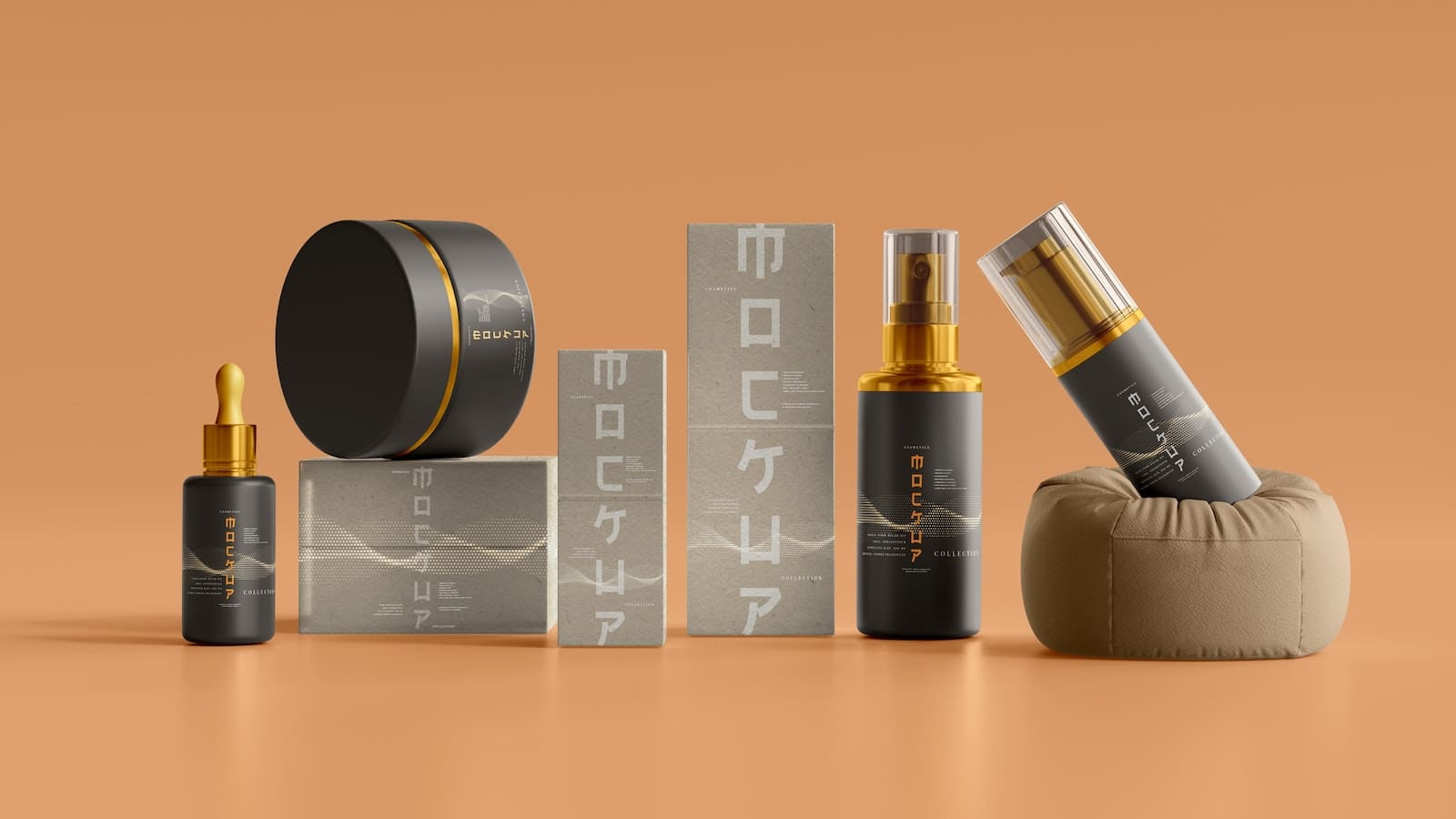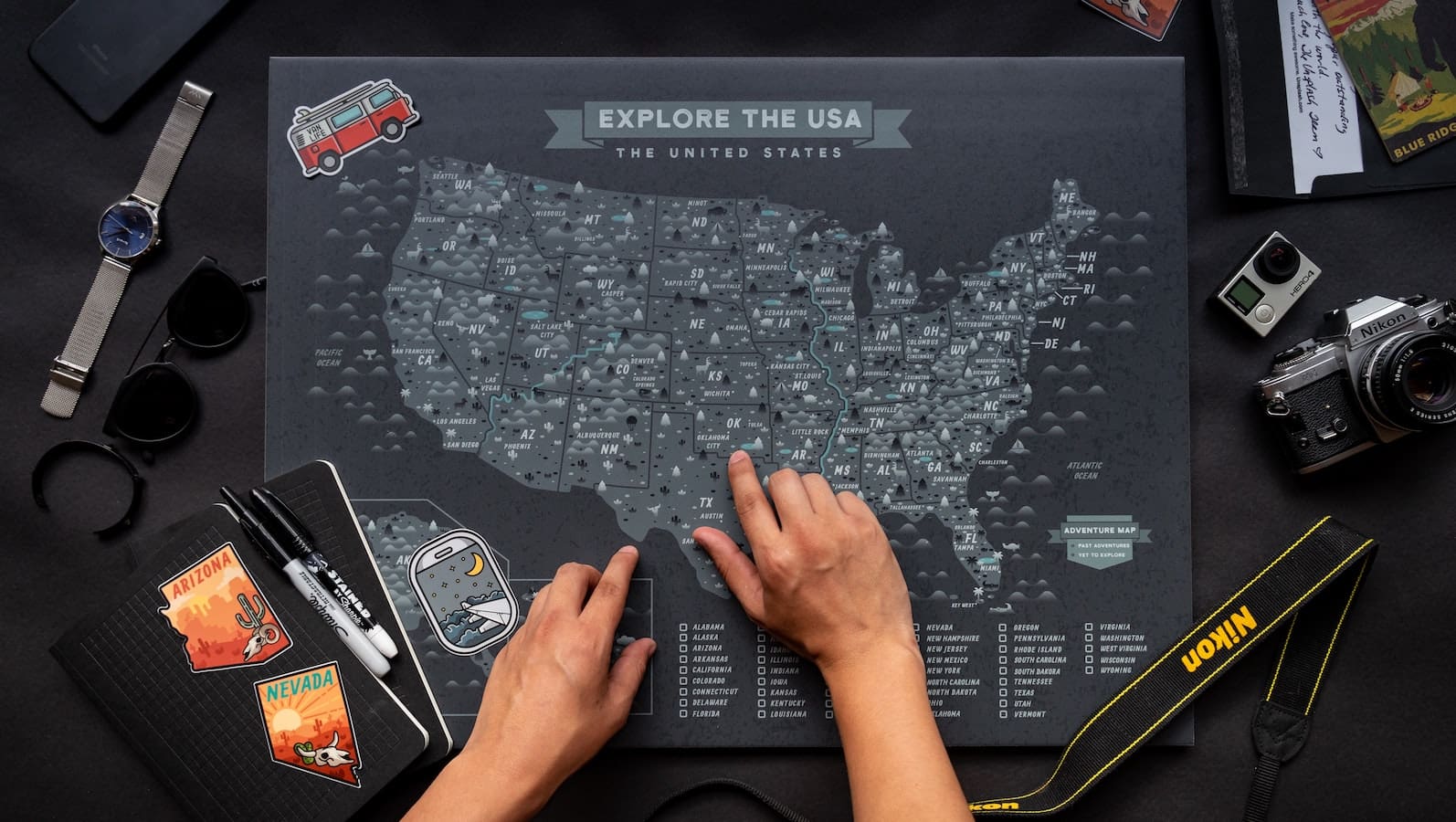Table of Contents
** Minutes
What is production forecasting?
The 3 main types of production forecasting
How to forecast production using the top forecasting methods
Accurate forecasting requires accurate data
Production forecasting is integral to your direct-to-consumer (DTC) brand’s success.
Effective production forecasting streamlines your inventory management and simplifies your production planning —but also improves customer satisfaction at the same time.
Read on to learn more about the importance of production forecasting, and get acquainted with all the different forecasting methods your brand can choose from.
What is production forecasting?
Production forecasting is the process of estimating future demand for retail products, as well as the resources required to manufacture those products.
Typically, these resources include manual labour, money, machinery, and raw materials.
Production forecasting helps product-based brands maintain optimal inventory levels. That way, they can keep customers happy and boost their overall profitability.
How exactly? When done right, production forecasting helps you make more accurate estimates of future demand. That way, you can feel confident in submitting purchase orders (POs) for what you need to meet demand to avoid under- or overstocking.
Proper forecasting can:
- Improve efficiency at every stage of the supply chain
- Prevent stockout situations and subsequently lost sales
- Achieve optimal order quantities that save your brand money
- Delight customers with a consistent product selection
- Keep cash flow on a consistent, upward trajectory
Each of these benefits plays a role in your company’s success. But the biggest benefit of all? Production forecasting makes your brand wildly more resilient against uncertainties throughout your ecommerce supply chain.
Production forecasting is more important than ever
These days, production forecasting is more important than ever — especially in light of current supply chain challenges and increasing customer expectations.
Take the 2022 baby formula shortage, for example. Most formulas have been widely unavailable for months. But that doesn’t mean there was no demand for these out-of-stock products (there was).
With the introduction of ByHeart, the US’s 4th FDA-approved infant formula, the shortage should hopefully be nearing an end. Precise forecasting will allow impacted retailers to bypass rippling supply chain issues caused by the shortage, like long lead times and excess inventory.
But to do this, retailers’ forecasts need to account for the demand they couldn’t fulfil in addition to the infant formula they sold through.
This country-wide shortage is not an outlier following the COVID-19 pandemic. Many industries face similar supply chain challenges (remember when there was no toilet paper?).
Luckily, proper production forecasting can help brands overcome these challenges (without overstocking on safety stock) while making the brand more resilient against future disruptions.
The 3 main types of production forecasting
The 3 main types of production forecasting are qualitative forecasting, causal modeling, and time series analysis.
Qualitative forecasting
Qualitative forecasting is used when historical data is scarce or non-existent — for example, when launching a new brand or product.
Without this data, production managers have to use their best judgment. Alternatively, they can lean on qualitative data from their customers and in-house sales teams obtained through surveys, polls, and other similar methods.
By surveying your customers, you can gain insights that aren’t accessible from static sales data, such as insights that assess satisfaction with your brand or gauge interest in a new release.
Surveying your sales team can also help you predict how well a new product will sell. This way, you can create production forecasts to adequately meet this demand.
Once you’ve gathered qualitative information, you can turn it into quantitative estimates for your finished products and raw materials. This makes qualitative forecasting relatively accurate, even though it was initially based on subjective opinions and judgments.
| When to use qualitative forecasting methods: | Retailers can implement qualitative forecasting tools when they don’t have any historical data to lean on. This forecasting model is most often used by brands that are starting out, or those who are getting ready to launch a new product or product line. |
Causal modeling
Causal modeling is when brands attempt to forecast future events within the retail marketplace.
These predictions consider variables that often influence product movement and market trends, such as inventory availability and consumer preferences.
The idea behind causal modeling is to determine the impact that those variables will have on actual demand and your capacity to fulfil orders.
For instance, will a lack of inventory availability lead to retail fulfilment delays? Or will a certain product go viral on social media, causing a surge in demand?
Generally speaking, causal modeling begins with an assessment of the market as it currently stands, including where your company is positioned compared to your competitors.
From there, you’ll have to identify all the variables that can influence the direction that the market might move. Again, this includes things like:
- Buyer behaviours and preferences
- The flow of your supply chain
- Whether products and materials are readily available
Once you have a good idea of what will happen with the larger market, you can apply those variables to your forecasting estimates.
Often, causal modeling looks at pipeline considerations, market survey information, and the results from a time series analysis.
| When to use causal modeling methods: | Retailers can use causal modeling once they’ve identified the independent and dependent variables that impact forecasting. These variables will include market competitors, economic forces, and consumer opinions or buying trends. |
Time series analysis
Time series analysis is a strategy that makes forecasts based on time-stamped data. More specifically, a merchant collects this data at consistent intervals within a designated time period, rather than recording it at random.
Your team is then responsible for analising this data, which can shed light on the “why” behind different inventory outcomes, like why the business’s sales plateaued in Q3.
Time series analysis can also reveal how variables change over time — for instance, how your variable data fluctuates over several weeks, months, quarters, or even a years’ worth of sales.
However, a time series analysis requires a large range of data points.
Too little data will leave holes in your analysis, which can cause inaccurate or unreliable inventory forecasts. On the other hand, an extensive data set will empower you to uncover sales trends and weed out outliers like seasonal variance in demand.
| When to use time series analysis methods: | Retailers can take advantage of time series analyses when they have a lot of non-stationary data, like variable buying patterns. This method can be useful to see how certain inventory assets or data points shift and change over a set period. |
How to forecast production using the top forecasting methods
Production forecasting is far from a one-size-fits-all process for retailers.
Instead, there are multiple forecasting methods your brand can choose from depending on its needs, capabilities, product types, and available data.
For example, a company launching its first product will undoubtedly require a different forecasting method than a company that’s been in business for several years.
Likewise, a brand that experiences fluctuations in demand due to seasonality will forecast differently than a brand with consistent sales numbers throughout the year.
For this reason, you should always define your brand’s needs before choosing a forecasting method or making predictions on future demand.
Here are some of the most common forecasting methods.
The Delphi method
The Delphi method is a type of qualitative forecasting. Using the Delphi model, retailers consult inventory experts to inform their production forecasts. These opinions are collected through several rounds of questionnaires that are sent to each expert.
After every cycle, a 3rd-party facilitator gathers the answers, generates a summary report, and distributes this report to all participants.
From there, the experts read through the report and either agree or disagree with one another’s answers (and possibly make additional suggestions on the forecasting process).
The Delphi method is not complete until the whole group has reached a consensus.
Although this strategy is somewhat time-consuming, it allows retailers to draw insights from several knowledgeable people — and because it doesn’t involve any in-person discussion, your experts can be located anywhere in the world.
With that said, the questionnaires need to be filled out within the same time frame, so keep that in mind if you choose to try the Delphi method.
| What this method is used for: | The Delphi method is used to arrive at a forecasting decision by surveying a panel of experts. The typical applications for the Delphi method include forecasts for long-range sales and the sales for new products (where no historical data exists). |
| Accuracy of this method: | The Delphi method ranks as ‘fair to very good’ in terms of forecast accuracy. This level of accuracy applies across the board — for short-term (0 to 3 months), medium-term (3 months to 2 years), and long-term (2 years and up) production forecasts. |
| Required resources and data: | The Delphi method requires the help of a panel of experts, a series of questionnaires, and a 3rd-party facilitator to review all relevant information (submitted through the questionnaires). |
The historical analogy method
The historical analogy method is a quantitative approach to forecasting where the past sales of a similar product help predict the likely sales of a new SKU. At its core, it is a comparative analysis of the introduction and growth of similar inventory items.
Forecasting by historical analogy assumes that two different products have enough in common to follow the same baseline behaviour regarding customer sales and demand.
Retailers analyse the product life cycle and demand of past inventory with the assumption that a new item in the same or similar product category will also follow that trajectory.
For example, say your brand is introducing a product in a new size, colour, or flavour. Using the historical analogy method, you can use historical sales data from the “original” product to guide your production estimates.
It is also important to note the risk of product cannibalization with the historical analogy method. Cannibalization happens when a new product displaces an existing one. Meaning, your latest release affects the sales of an older item (and potentially hurts your cash flow).
Unless you’re introducing a totally new category, new products will likely impact your existing items to some degree. This is something to consider as you’re creating production forecasts for new SKUs and older inventory.
| What this method is used for: | The historical analogy method creates forecasts for new SKUs or product offerings. The typical applications for historical analogy include long-range and new product sales. In some cases, it is also used to forecast profit margins. |
| Accuracy of this method: | The historical analogy method ranks as “poor” for short-term forecasts (0 to 3 months). However, it’s considered “good to fair” in its accuracy for both medium-term (3 months to 2 years) and long-term (2 years and up) forecasting estimates. |
| Required resources and data: | The historical analogy method requires several years’ worth of sales data on one or more products that are similar to your newest SKU. Without these historical insights, you won’t be able to properly analyse sales trends or buyer behaviour. |
The moving average method
The moving average method is sometimes called “rolling average” or “running average.”
Regardless of which term you prefer, this method analyses a range of data points by creating a series of averages from the full data set. For DTC brands, this data set comes from your historical information and it is used to identify buying patterns that might affect your estimates.
Moving average is a statistical forecasting method generally used for predicting short-term trends and long-term demand. It’s often used alongside time-series data to help smooth out short-term fluctuations (such as seasonality) and highlight long-term sales cycles.
This strategy finds the average from a set of time-stamped data, then applies that average to future demand for your products.
But how is this method “moving”? It’s moving in the sense that you can shift your range of data as needed. This makes the strategy more flexible than relying on a rigid data set or static spreadsheet model.
| What this method is used for: | The moving average method identifies short-term sales trends and long-term demand for your products. It’s also an appropriate method for maintaining inventory control over low-volume or low-selling products from your catalogueueue. |
| Accuracy of this method: | The moving average method ranks fairly low in terms of its forecast accuracy. It’s considered ‘”poor” for short-term (0 to 3 months) and medium-term (3 months to 2 years) forecasts and is “very poor” with regard to long-term (2 years and up) estimates. |
| Required resources and data: | The moving average method requires a minimum of 2 years’ worth of historical data and sales history if seasonal fluctuations occur. Otherwise, if your products don’t experience seasonality, you can opt to use less data as needed. |
The trend projection method
Trend projection is the most straightforward way to estimate production forecasting. This method uses your company’s past sales data to predict future production.
The idea is that the factors responsible for past trends and spikes in demand will continue at the roughly same rate. In other words, it’s assumed that demand forecasting will follow historical patterns.
This way, you can quickly estimate production schedules since you anticipate things will look like they did in previous months, years, and so on.
Trend projection is a quantitative style of forecasting that leans on tangible, concrete data from your previous sales. To use this method, your brand must have about 2 years’ worth of data accumulated and ready to analyse.
| What this method is used for: | Trend projection is used for DTC brands who want a simple, uncomplicated way to forecast. It’s best for intermediate or long-term forecasts for popular inventory items. |
| Accuracy of this method: | Trend projection ranks as “very good” in its accuracy for short-term (0 to 3 months) forecasts. In addition, it’s a “good’”option for medium-term (3 months to 2 years) and long-term (2 years and up) production estimates. |
| Required resources and data: | Trend projection requires a few years of annual sales data to ensure accuracy. A good rule of thumb is having between 2 and 5 years of data to analyse for forecasting purposes. |
The regression model method
Sales regression forecasting is used to understand how certain factors within the sales process affect product performance, and how those factors can predict changes in sales forecasts over time.
Although both independent and dependent variables are at play within the regression model, the dependent variable — sales performance — always remains the same. Sales performance can extend to anything from total revenue to total products sold.
By contrast, your independent variables are whichever factors you’re examining that impact sales performance. Common independent variables include your marketing strategies, social media campaigns, or the number of marketplaces where you sell. Wider factors like manufacturing processes and production efficiencies can also have some impact, so it’s often beneficial to learn how to calculate downtime and measure key performance indicators to add more context to your analysis.
With sales regression forecasting, retailers can gain insight into what the future might look like based on previous sales and production performance.
Analising this performance helps anticipate future needs and can reveal changes that need to be made, like expanding where you sell or spending more money on marketing.
| What this method is used for: | Regression forecasting examines independent and dependent variables that can affect your sales performance. This method helps forecast specific product categories. |
| Accuracy of this method: | Regression forecasting ranks as “good to very good” for both short-term (0 to 3 months) and medium-term (3 months to 2 years) forecast accuracy. Conversely, long-term (2 years and up) forecasts are known to have “poor” accuracy with this method. |
| Required resources and data: | Regression forecasting requires several years’ worth of quarterly sales history to observe meaningful trends in your sales performance. It also requires you to consider the influence of independent and dependent variables on the data. |
The life cycle analysis method
The life cycle analysis method observes a product’s life cycle to forecast its potential growth. This method depicts a product’s performance within a given time frame based on an S-curve analysis. It’s often used to anticipate buying trends and pinpoint retail needs.
The life cycle of a product is typically divided into five stages:
- Experimentation and development
- Introduction to the marketplace
- Growth of product sales
- Product maturity and saturation
- Market decline for product
At different stages of this cycle, demand for your products and production may rapidly increase, level off, or steadily decline. Analising this ebb and flow can guide your decision-making for inventory replenishment, reordering, and more.
Using this method to forecast demand for a new product? Examine the launch of a similar item to improve the accuracy of your estimates.
In general, demand starts slow and then accelerates as your promotions kick in and products gain more visibility.
The difficulty lies in predicting how quickly the product life cycle will progress, which is why it’s great to refer to similar product listings wherever possible.
| What this method is used for: | The life cycle analysis method is rooted in an S-curve analysis of the product life cycle. It’s often used to generate production forecasts for new products preparing to launch. |
| Accuracy of this method: | The life cycle analysis method ranks fairly low for forecasting accuracy. In fact, it’s “poor” in its accuracy for short-term (0 to 3 months) forecasts and just “poor to good” for medium-term (3 months to 2 years) and long-term (2 years and up) predictions. |
| Required resources and data: | The life cycle analysis method requires data on the annual sales of the product being considered — or data from a similar product when introducing a new SKU to the marketplace. |
Accurate forecasting requires accurate data
Accurate forecasting starts with accurate inventory data. Period.
Fortunately, Cogsy and ShipBob can help eliminate your roadblocks to inventory accuracy, so you can forecasts demand with clarity and confidence.
The importance of having accurate data
It’s no secret that accurate data is the lifeblood of your DTC brand. After all, the more inaccuracies there are with your data, the more problems you’re likely to run into.
Accurate data ensures you avoid stockouts and overstocking while supporting stronger supplier relationships.
That’s because suppliers grow frustrated when your purchase orders are constantly incorrect or require a lot of editing. After all, this creates more work and headaches on their end.
Meanwhile, accurate data is practically synonymous with accurate inventory forecasts. When your inventory records are reliable, so are your production forecasts — and the more better your inventory records, the less work you put on your suppliers and your ordering team.
Why having accurate data is so challenging for retailers
Acknowledging the importance of accurate data doesn’t alleviate the challenges associated with gathering and preserving it.
Maintaining the integrity of product and sales data isn’t easy for modern DTC brands, especially with inaccurate inventory counts being one of the biggest triggers.
Various factors can cause inaccurate inventory counts, including undocumented inventory losses, fulfilment errors, disorganised warehouses, and mismanaged returns.
While any of these factors can offset accuracy, dealing with multiple at once will compound your problems even further.
Luckily, implementing the right processes and technology can support accuracy — and ease! — throughout your retail operations.
How Cogsy and ShipBob help solve these challenges
When retailers use Cogsy and ShipBob together, they can tackle tons of different ecommerce challenges — especially those associated with data accuracy.
With the Cogsy x ShipBob integration, you can:
- Automatically sync your sales history, POs, and product information.
- Get deeper insights into your inventory trends.
- Produce accurate production forecasts based on historical sales and inventory trends.
- Easily create POs with the right amount of inventory to fulfil future demand.
Ready to optimise your production forecasting with the help of advanced software solutions? Get in touch with ShipBob to get started and learn more about the Cogsy integration.
Production forecasting FAQs
Below are answers to common questions about production forecasting.
Why is production forecasting important?
Production forecasting is more important than ever — especially in light of current supply chain challenges and increasing customer expectations.
Careful production forecasting helps you make accurate estimates for future demand. This way, you can confidently submit your POs and order exactly what you need to meet demand without overstocking.
What are the most common forecasting methods?
There are several forecasting methods to choose from based on several factors. The most common ones include the Delphi method, the historical analogy method, the moving average method, the life cycle analysis method, and the trend projection method.
How do Cogsy and ShipBob enable production forecasting efforts?
By integrating ShipBob with Cogsy, your brand can access real-time data for your inventory and your online store. Real-time inventory data points are updated around the clock, so you can forecast production with greater accuracy and efficiency.



